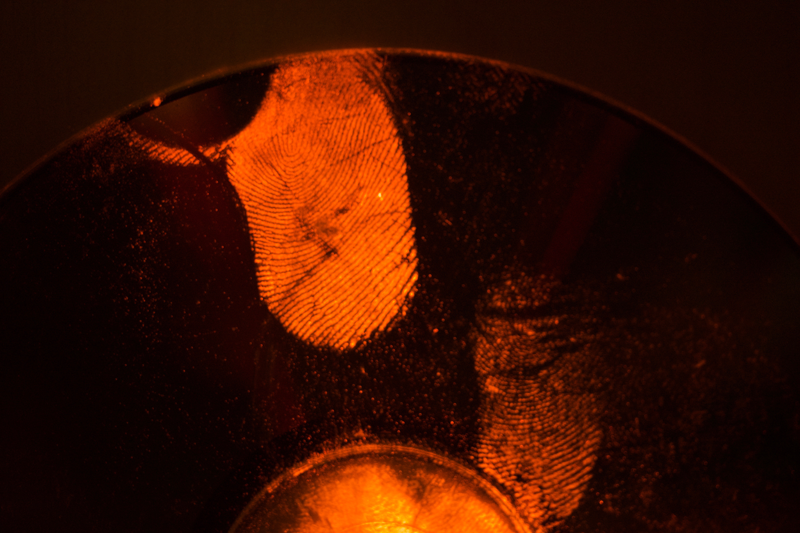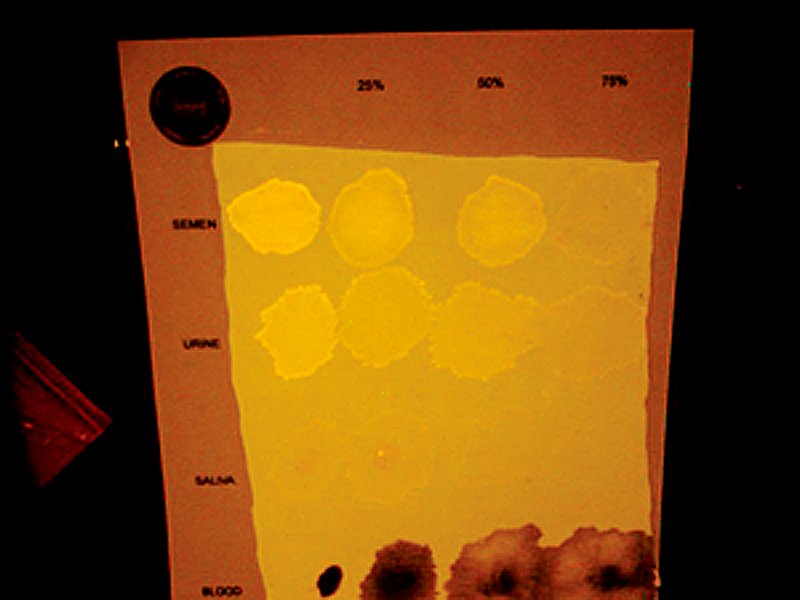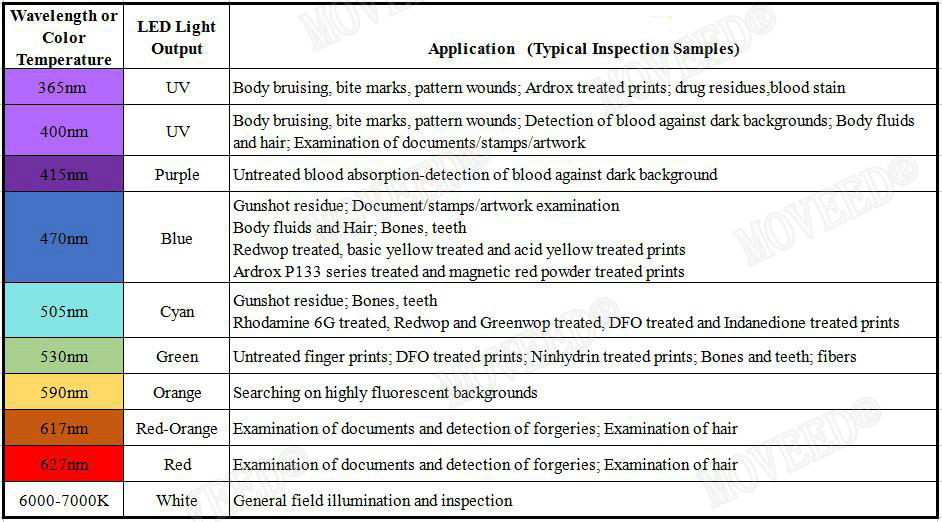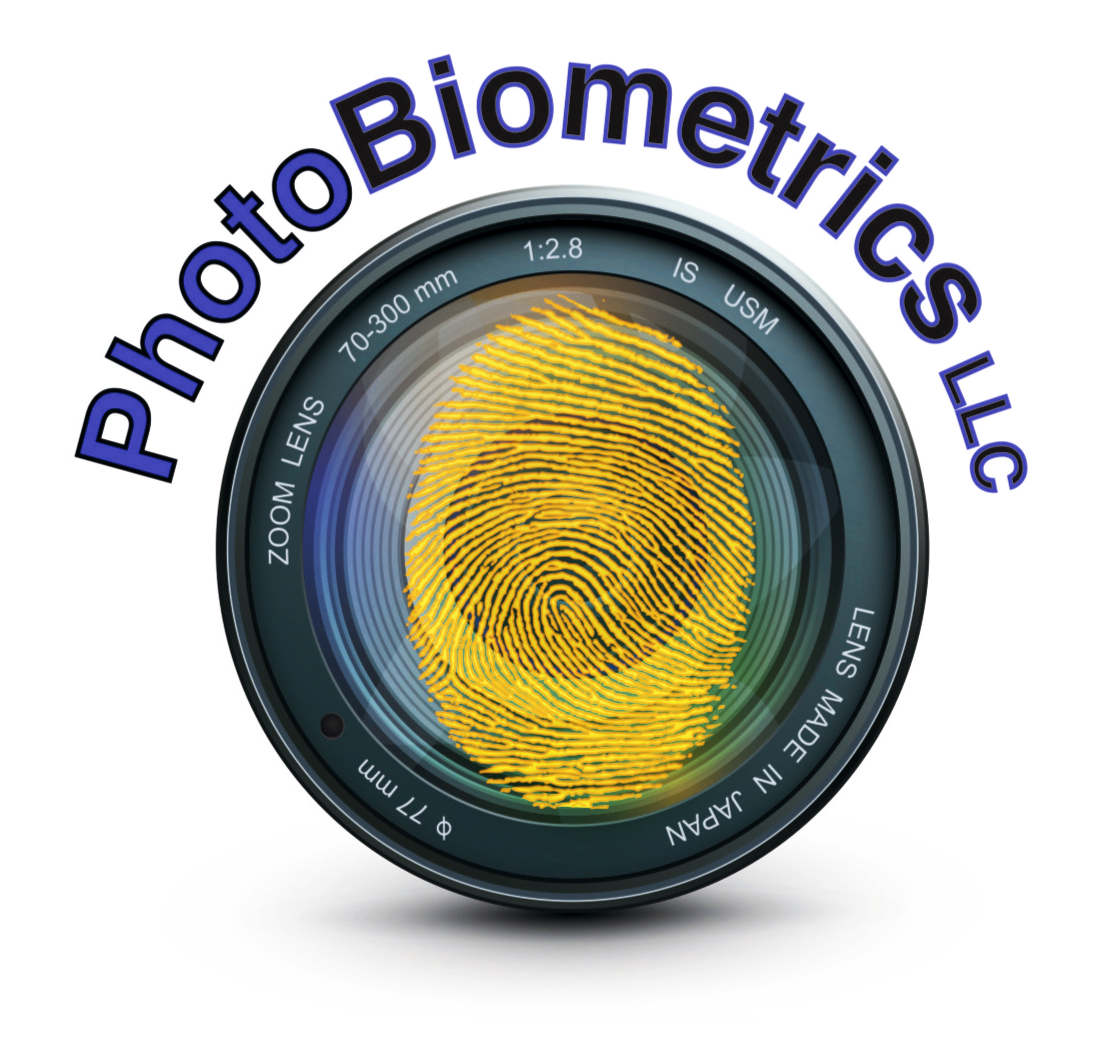What is a Forensic Light Source?
A forensic light source is a investigative tool for enhancing location and observation, photography, and collection of evidence including latent fingerprints, body fluids, hairs and fibers, bruises, bite marks, wound patterns, shoe and foot imprints, gun shot residues, drug traces, questioned documents, bone fragment detection, etc. It provides more sensitivity than traditional methods thus increasing the amount of evidence uncovered and the quality of the evidence photographed and collected.
- A forensic light source is made up of a powerful lamp containing the ultra-violet, visible and infrared components of light. It then filters down the light into individual color bands (wavelengths) that enhance the visualization of evidence by light interaction techniques including fluorescence (evidence glows), absorption (evidence darkens), and oblique lighting (small particle evidence revealed).

Other Substance Detection: Body fluids like semen, saliva, and vaginal fluids are naturally fluorescent, a forensic light source offers a very effective method for locating them. You can narrow down the specific locations of stains for collection instead of testing entire, large pieces of evidence such as a mattress, a carpet, a sheet, an article of clothing, etc. The dried body fluids will actually glow under the light source illumination. Although the body fluids will fluoresce under an ordinary UV black light, many articles on which you would find them including clothing and sheets will also glow and deter their detection. It is therefore necessary to tune to visible color bands (wavelengths) to eliminate the background interference. Considering you will be searching for body fluids on high profile, capital crime cases, the more body fluid evidence you can reveal the better. Again, the more powerful and more tunable your light source, the more evidence you will uncover. Although blood does not glow in the visible range, it has a unique color band (wavelength) under which the blood stain will darken to enhance its contrast by approximately 4 times. This is most effective in photographing blood prints because more of the detail of the blood print will be revealed by the enhanced contrast.


Images courtesy of Spex Forensics, Edison NJ
Chart courtesy of Lightmobile division, Hangzhou Hengli Electric, Hangzhou, China

